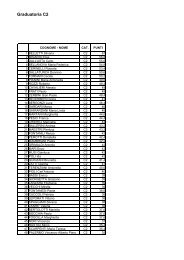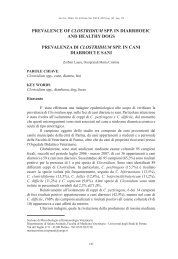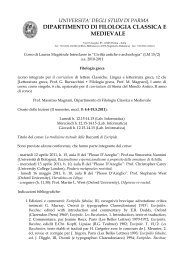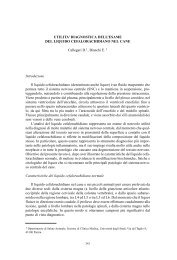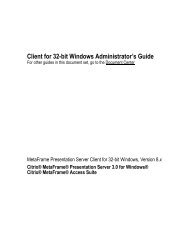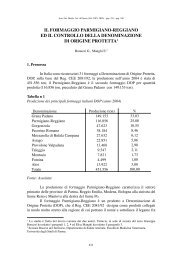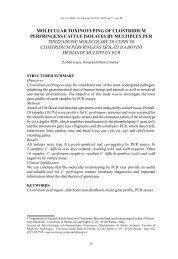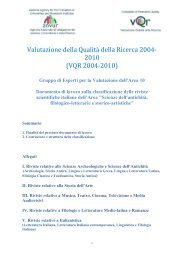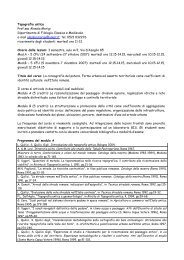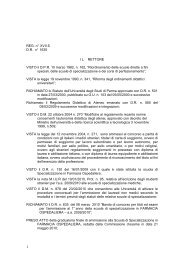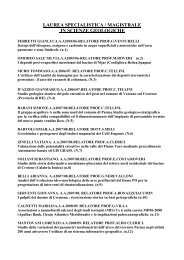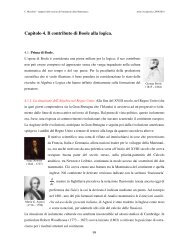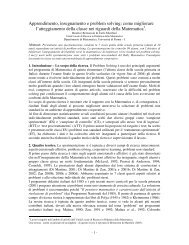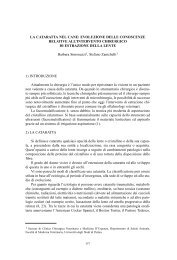porcine reproductive and respiratory syndrome
porcine reproductive and respiratory syndrome
porcine reproductive and respiratory syndrome
Create successful ePaper yourself
Turn your PDF publications into a flip-book with our unique Google optimized e-Paper software.
4 th International Symposium on Emerging <strong>and</strong> Re-emerging Pig Diseases – Rome June 29 th – July 2 nd , 2003<br />
been tested in our laboratory to prevent false positive results.<br />
As a general practice today in PCR laboratories, samples <strong>and</strong><br />
mixes are h<strong>and</strong>led in laminar airflow hoods, which are<br />
regularly decontaminated using ultra-violet (UV-C) light <strong>and</strong><br />
bleach, help to avoid false positives. We are running a<br />
recommended laboratory practice for the basic steps of nested<br />
PCR (mix <strong>and</strong> primer preparation, sample preparation, first<br />
<strong>and</strong> second PCR) in separate laboratory locations. In addition,<br />
special tube-holders <strong>and</strong> openers were constructed to<br />
minimise the false positive PCR results (7, 8, 10).<br />
Internal controls to avoid false negative results<br />
It is well documented today that inhibitory effects of<br />
ingredients, like heparin, semen components <strong>and</strong> other<br />
sample contaminants <strong>and</strong>/or pipetting errors might lead to<br />
false negative results of the PCR. In such cases the infected<br />
samples tested as negative. To avoid such misleading results,<br />
the use of internal controls (termed "mimics") is<br />
recommended. The mimics are safe indicators of amplification<br />
efficiency. A general rule for mimic construction is to produce<br />
nucleic acid molecules, which are different from the target viral<br />
nucleic acid, both in composition <strong>and</strong> in size, but having the<br />
same primer-binding sequences. Due to the same primerbinding<br />
nucleotide sequences, template <strong>and</strong> mimic are coamplified<br />
in the same tube without competition. The size<br />
differences between target <strong>and</strong> mimic provide an easy way to<br />
discriminate the true product from the mimic (3, 10). An<br />
alternative, particularly when working with RNA viruses, is to<br />
use a second primer set in the reaction, which is specific for<br />
the mRNA of a cellular “housekeeping” gene, which is<br />
constitutively expressed in all cells.<br />
Controls in real-time PCR<br />
When running real-time PCR assays, it is also important to<br />
incorporate internal controls. A practical approach is when a<br />
selected fragment of the host animal genome is co-amplified<br />
as an internal control. By including such an intrinsic control<br />
with its specific reporter fluorophore we obtain information on<br />
the sample quality <strong>and</strong> on pipetting errors. Simultaneously,<br />
the system shows the amplification of the target nucleotide<br />
sequences <strong>and</strong> provides safety for the diagnosis.<br />
Validation, st<strong>and</strong>ardisation<br />
The work of test validation <strong>and</strong> st<strong>and</strong>ardisation is extremely<br />
important today. Both national <strong>and</strong> international authorities<br />
require rigorous proof that the diagnostic assays are as<br />
reliable as possible. It is clear today that validation <strong>and</strong><br />
st<strong>and</strong>ardisation are practical necessities as a “performance<br />
benchmark” if better new <strong>and</strong> more reliable diagnostic tests<br />
are to be developed <strong>and</strong> brought into everyday use.<br />
International agencies like the OIE, the Joint FAO/IAEA<br />
Division, national research institutions <strong>and</strong> commercial<br />
companies make great efforts to agree on international<br />
st<strong>and</strong>ardisation (34, 35). Considering these requirements, our<br />
laboratory (together with our partner institutions in Europe)<br />
has started the validation <strong>and</strong> st<strong>and</strong>ardisation of the routine<br />
diagnostic PCR assays.<br />
Diagnostic assay validation<br />
To make predictions about the performance of a diagnostic<br />
method, it is necessary to validate the assay in question.<br />
Validation is the evaluation of the method with the purpose to<br />
determine how fit the assay is for a particular field of use.<br />
General requirements for the competence of testing <strong>and</strong><br />
calibration laboratories (EN ISO/IEC 17025:2000)<br />
This st<strong>and</strong>ard is from late 1999 <strong>and</strong> is the st<strong>and</strong>ard to be<br />
followed for accredited European laboratories performing<br />
routine diagnostic work <strong>and</strong> it substituted the st<strong>and</strong>ard EN<br />
45001:1989. Basically this st<strong>and</strong>ard gives the frame for the<br />
22<br />
work of an accredited laboratory <strong>and</strong> it specifies many<br />
important parameters in such an environment. Part of the<br />
st<strong>and</strong>ard is covering issues of validation. It is stated that the<br />
laboratory should validate: non-st<strong>and</strong>ardized methods, inhouse<br />
developed methods <strong>and</strong> st<strong>and</strong>ardized methods if<br />
they are used outside the original area of use. The<br />
validation process, routines <strong>and</strong> results should be<br />
documented <strong>and</strong> finally a statement by the laboratory<br />
discussing the suitability of the test can be made. The<br />
amount <strong>and</strong> quality of the work involved in such a validation<br />
process is largely determined by the needs of the<br />
customers. Examples of estimated parameters can be: LoD<br />
(Level of Detection), linearity of the method, reproducibility,<br />
repeatability, robustness or any other parameter interesting<br />
to the customer. This, rather general, st<strong>and</strong>ard has been<br />
further developed for the veterinary field by OIE.<br />
The OIE principles of validation<br />
OIE has published (2000; new version is due 2004) a<br />
st<strong>and</strong>ard for the validation of diagnostic assays in the<br />
veterinary field. Chapter I.3 in this st<strong>and</strong>ard (“Principles of<br />
validation of diagnostic assays for infectious disease”)<br />
describes in detail how to perform validation of the<br />
diagnostic assays in a st<strong>and</strong>ardised way. Since this chapter<br />
is of major importance, we provide here shortly the main<br />
points of assay validation according to OIE.<br />
Stage 1. Feasibility studies<br />
The first step in validating a new assay is to perform some<br />
kind of feasibility study. The aim is to determine whether or<br />
not a new assay is suitable to detect a range of virus<br />
concentrations without background activity. Several control<br />
samples (



